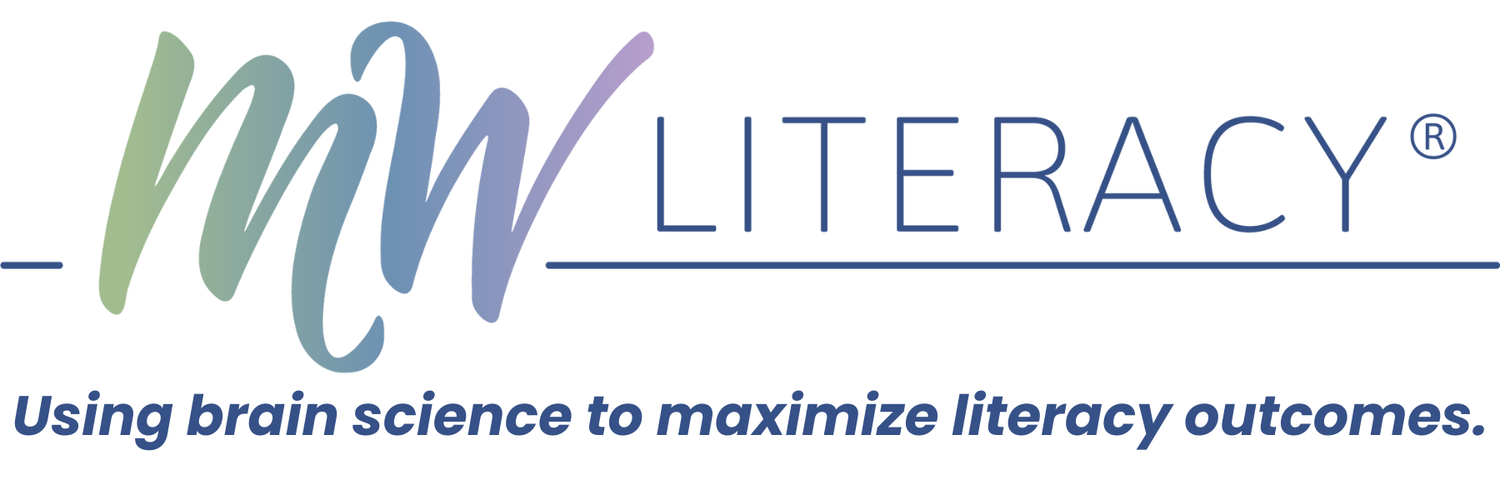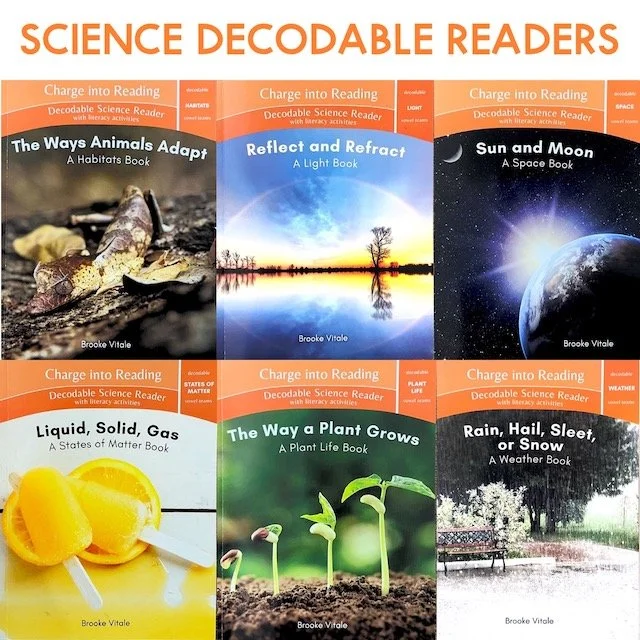LET‘S CHAT ABOUT decodable texts
This page contains affiliate links.
When a text is decodable, it means that it only contains words with spelling patterns that students have already learned. A text is NOT decodable if the students reading them have not received explicit and direct instruction of the included phoneme-grapheme relationships. Students who are instructed with decodable build confience and success using and building upon previously taught skills to become confidence and successful readers.
One of the more frequent and important questions asked is: There are. so mnay decodable texts out there these days. How do I choose the best ones?
First and foremore, the decodable texts you use should align with the sequence in which you are introducing spelling patterns.
The decodables I am spotlighting on this page is the Charge into Reading Decodable Readers. Full disclosure, I have the privilege of being the literacy consultant for this company, and absoutely love them, but not just becausae I’ve been a part of the creation process. Here’s why I think these these books are a must-have.
1) Decodable Words that follow a sequence
There are 10 stages in the Charge into Reading decodable series, and each book in each stage methodically introduces words relevant to the phonics sequence for that stage while building upon knowledge of spelling patterns in previous stages. Words are thoughtfully used to align with the sequence. (The sequence is available here.) Each book is also clearly labeled in the top corner for easy identification of targeted spelling pattern or sound.
STAGE Pre-1: Beginning Letters and Short Vowels (Ideal for students who haven’t yet learned all the consonant sounds, or who don’t have the stamina for the length of a Stage 1-9 book.)
STAGE 1: Short Vowels
STAGE 2: Consonant Blends
STAGE 3: Digraphs
STAGE 4: Long Vowel VCE
STAGE 5: Word Ending Spelling Patterns
STAGE 6: R-Controlled Vowels
STAGE 7: Vowel Teams
STAGE 8: Diphthongs
STAGE 9: Advanced Spelling Patterns
2) Complete transparency
Before placing an order, you can get a full list of words in each text. This transparency allows the buyer to preview all the words in each book. Are there any words you will need to pre-teach for vocabulary or other purposes? Do you just want to know the content and word choices for the text you will introduce to your young readers? No surprises. A complete list is available prior to purchasing.
3) LIMITED HIGH FREQUENCY WORDS
We all know that most books can’t be written with JUST the words from the sequence for that specific stage, although these come very close! Ultimately, writers have to make room for some high-frequency words—these may be words that are decodable but with patterns readers haven’t yet learned (we or for), or words with irregular spelling patterns (said). There are a very limited number of such words in these texts, but again, there is also full transparency so that the buyer will know which words they are ahead of time.
4) a storyline! (AND ADDITIONAL LITERACY ACTIVITIES)
Each book was thoughtfully written with a true storyline. Each 14-page story has an added 8 pages of sound-specific literacy activities and is bound together in a just-right-size book for little hands.
5) Incidental INclusion of diverse characters
Children need to see themselves reflected in stories as main characters who are not there for the purpose of educating others about who they are or what their challenges are. This was something discussed early on in the development of these books , and we have made a point of ensuring that every stage of the series features diverse main characters whose job is not to educate others about their identities or disabilities.
6) tier 2 vocabulary
Who says decodable vocabulary has to be dull? Perhaps one of my favorite features of these books is the academic vocabulary. Some of these words are multi-meaning words which can be the basis of an engaging language activity. Let’s take one of the Stage 2 texts, The Plum Plot. How many different meanings of plot can you think of? The main events of a book, to secretly plan and carry out an action, and a parcel of land. In a Stage 9 text, The Sleigh, all three homophones pear, pair, and pare are used. As we move along each stage, we include words such as: mulch, cove, hedge, sparse, boast, waylaid, and trawler, just to name a few!
BUT WAIT, there’s more!
Charge into Reading also published a box set of nonfiction science decodable readers. These are PhD-vetted, 48-page books decodable through Stage 7 of the fiction sequence. These are aligned to science standards, but also the perfect pick for those older readers that don’t want a babyish feeling book in their hands but still need the support of decodable text.











